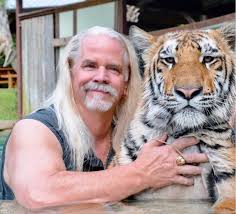
Introduction
Doc Antle, also known as Bhagavan Antle, is a well-known figure in the world of wildlife conservation, having gained fame through his appearances in the popular Netflix series “Tiger King.” His methods of animal handling and his sanctuary have sparked both admiration and controversy. This article explores the significance of Doc Antle’s work and the ongoing debates surrounding animal welfare.
Background and Career
Born in 1960 in Salinas, California, Doc Antle developed a passion for animals from a young age. He founded The Institute for Greatly Endangered and Rare Species (T.I.G.E.R.S.) in Myrtle Beach, South Carolina, which serves as both a sanctuary and a virtual zoo. Antle has been featured in numerous documentaries, including the acclaimed “Tiger King,” which escalated his level of notoriety and brought forth various discussions regarding zoos’ ethics.
Contributions to Wildlife Conservation
Doc Antle claims to prioritize the conservation of endangered species through his work. His sanctuary houses a range of exotic animals, including tigers, lions, and elephants. Antle has also participated in various breeding programs aimed at increasing the population of endangered species. He argues that educational experiences allow people to connect with wildlife, fostering a greater appreciation for conservation efforts.
Controversies Surrounding Antle
Despite his claims of promoting wildlife conservation, Antle’s methods have faced significant backlash. Critics argue that his treatment of animals raises ethical concerns, citing issues related to animal welfare standards in captivity. The 2020 release of “Tiger King” reignited discussions surrounding the ethics of exotic animal ownership, putting Antle into the spotlight along with other controversial figures in the industry.
Recent Developments
In 2021, Doc Antle was indicted on multiple charges related to wildlife trafficking and violating the Endangered Species Act. The investigation into his sanctuary and its practices continues to garner media attention, with environmental and animal rights groups urging stricter regulations on exotic animal breeding and exhibition. Any future legal proceedings could significantly affect Antle’s reputation and operations.
Conclusion
The story of Doc Antle serves as a complex lens through which we can examine wildlife conservation, animal welfare, and the ethical dilemmas of captivity. As discussions about responsible wildlife management evolve, the consequences of Antle’s actions could set precedents for the future of exotic animal sanctuaries and the conservation landscape. For readers, understanding these developments is crucial as they form opinions about wildlife conservation and activism in our society.



